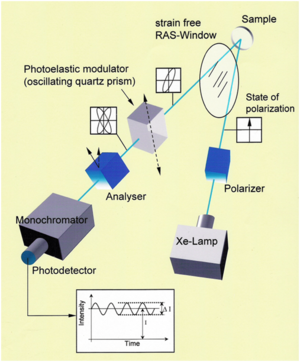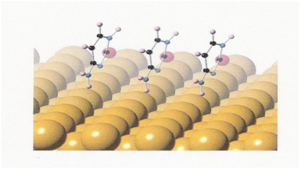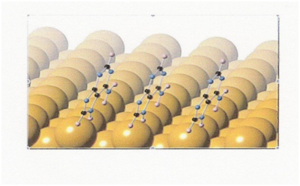Alumni Association
Professor Peter Weightman (University of Liverpool)
05 December 2011
![]()
Joint Research Project
Project title: Dynamics of Amino Acid Molecules on Solid Surfaces
Japanese Lead Scientist: Professor Masatoshi Tanaka, Department of Physics, Faculty of Engineering, Yokohama National University
UK Counterpart: Professor Peter Weightman, Physics Department and Surface Science Research Centre, University of Liverpool
Project Duration: April 2011 to 2013
Description of project
The project is aimed at understand the fundamental interactions that determine the behavior of interfaces between biological molecules and metal surfaces. This will provide insight into how these interfaces can be controlled and should lead to advances in the development of biosensors, biocompatible materials, medical devices and bioelectronic devices.
The function of biomolecules on surfaces is strongly influenced by the electronic states of the system and this collaboration brings together a team with the complimentary experience and access to a variety of equipment that makes possible a thorough investigation of the electronic structure of biometallic interfaces.
The Japanese groups have the expertise and access to equipment necessary to study biometallic interfaces using high-resolution core and valence photoelectron spectroscopy using synchrotron radiation and two-photon photoelectron spectroscopy (2PPE), respectively. The 2PPE studies are particularly important for studying the relaxation dynamics in the excited states of these systems. The Liverpool group have developed the technique of reflection anisotropy spectroscopy (RAS) which they have shown can be used to monitor the self assembly of biological molecules at surfaces in the liquid environments that are necessary for them to exhibit their functional behavior. The Liverpool group have also developed a terahertz beamline and a scanning near field microscope on the infrared free electron laser at Daresbury.
The team have agreed to focus their activities on the interactions between amino aids and nucleic acids on metal and silicon surfaces and they will share their technological expertise and promote the exchange of young researchers with a view to forming a sustained network between Liverpool university and Japanese team.
Departments and institutions involved
Department of Physics, Faculty of Engineering, Yokohama National University
Department of Electrical and Electronic Engineering, Faculty of Science and Engineering, Saga University Nanoelectronics Research Institute, Advanced Industrial Science and Technology (AIST)
Department of Physics, University of Liverpool
How collaboration started
The Synchrotron Light Application Center of Saga University whose director was Prof. Kamada concluded a cooperation agreement with University of Liverpool in 2007.
Prof. Weightman joined the Grant-in-Aid for Scientific Research project (Japan Society for the Promotion of Science) whose leader was Prof. Tanaka in 2008.
Amount of money awarded
2,500,000 JPY each year (2011-2013)
How participants are benefiting from the scheme
Exchange visits
Prof Weightman visited Yokohama and Saga in March 2010 to discus the proposed collaboration.
Dr Ohno and Mr. Momose from Yokohama visited Liverpool for two weeks in July 2011 to take part in collaborative experiments and learn the Liverpool technique for preparing surfaces for electrochemical experiments.
Dr Junpei Azuma from Saga bovistsi Liverpool in August 2011 to observe the Liverpool experiments on the ALICE accelerator at Daresbury laboratory.
Prof Kamada visit Liverpool in October 2011 to discuss the next stage of the research programme.
The collaborative developments since the project started
Research at individual laboratories
In Liverpool,
Search for immobilization of amino acid molecules at solid-liquid interfaces.
RDS measurements of amino acids molecules at the solid-liquid interface.
In Yokohama,
SDR measurements of amino acids adsorbed molecules on modified Si surfaces in UHV.
Realtime SDR measurements of amino acids molecules at the solid-liquid interface.
In Tsukuba (AIST),
VUV-RDS measurements of amino acids molecules at t the solid-liquid interface.
In Saga,
SRPES and 2PPE studies on amino acids molecules on solid surfaces in UHV.

A reflection anisotropy spectrometer built by the Liverpool group
P. Weightman, D.S. Martin, R.J. Cole, T. Farrell Rep. Prog. Phys. 68 1251 (2005)
The Liverpool group have shown that while the adsorption of adenine (A) on the Au(110) surface leaves the atomic structure of the surface free to reconstruct the adsorption of cytosine “freezes” the atomic structure of the Au(110) surface.
A/Au(110) free to reconstruct

C/Au(110) surface frozen

C. P. Mansley et. al. J. Chem. Phys. 132 214708 (2010), P. Weightman et. al. Phys. Rev. Lett. 96 86102 1 (2006), A. Bowfield et. al. e-Journal of Surf. Sci. and Nano. 7 0 (2009)
PDF version (102KB)
















